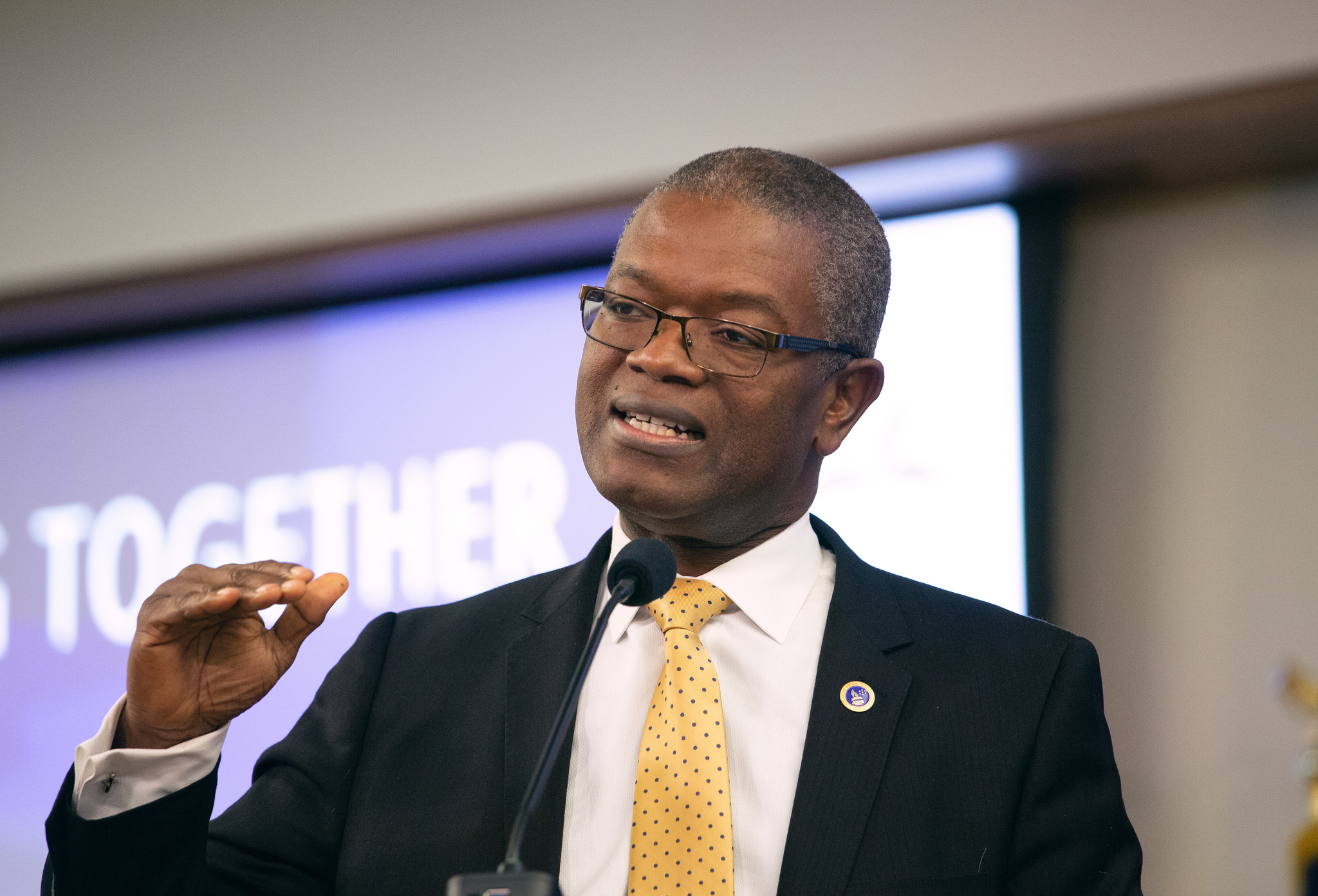
Pierre Omeler, secretary of the Atlantic Union Conference, speaks during the 2018 NAD Year-End Meeting morning worship on Nov. 4. Photo by Mylon Medley
After the morning devotional given by Pierre Omeler, a full day of business commenced on Sunday, Nov. 4, 2018, at the North American Division Year-End Meeting (NAD YEM).
The morning began with a devotional thought on a subject that every executive committee member has experienced either first-hand or indirectly — pastoral leadership transition and succession.
“The Church does not have a clearly defined, widely accepted leadership policy or plan for pastoral transition,” said Pierre Omeler, secretary of the Atlantic Union Conference, during his message entitled “Working Together in Love.” He said too often members, including youth and young adults, are negatively impacted by poorly led transitions. But it’s possible to have healthy, productive transitions if leaders model after Moses and Joshua.
“God has given us a blueprint,” said Omeler. “My prayer is that the day will come when leadership transition in this church will no longer be a moment of pain and suffering, but a time to celebrate the talents and ministries of both incoming and outgoing leaders; and to remind ourselves that, ‘Yes, pastors and human leaders will come and go, but we serve the eternal omnipresent, omnipotent God who will never leave us nor forsake us.’”
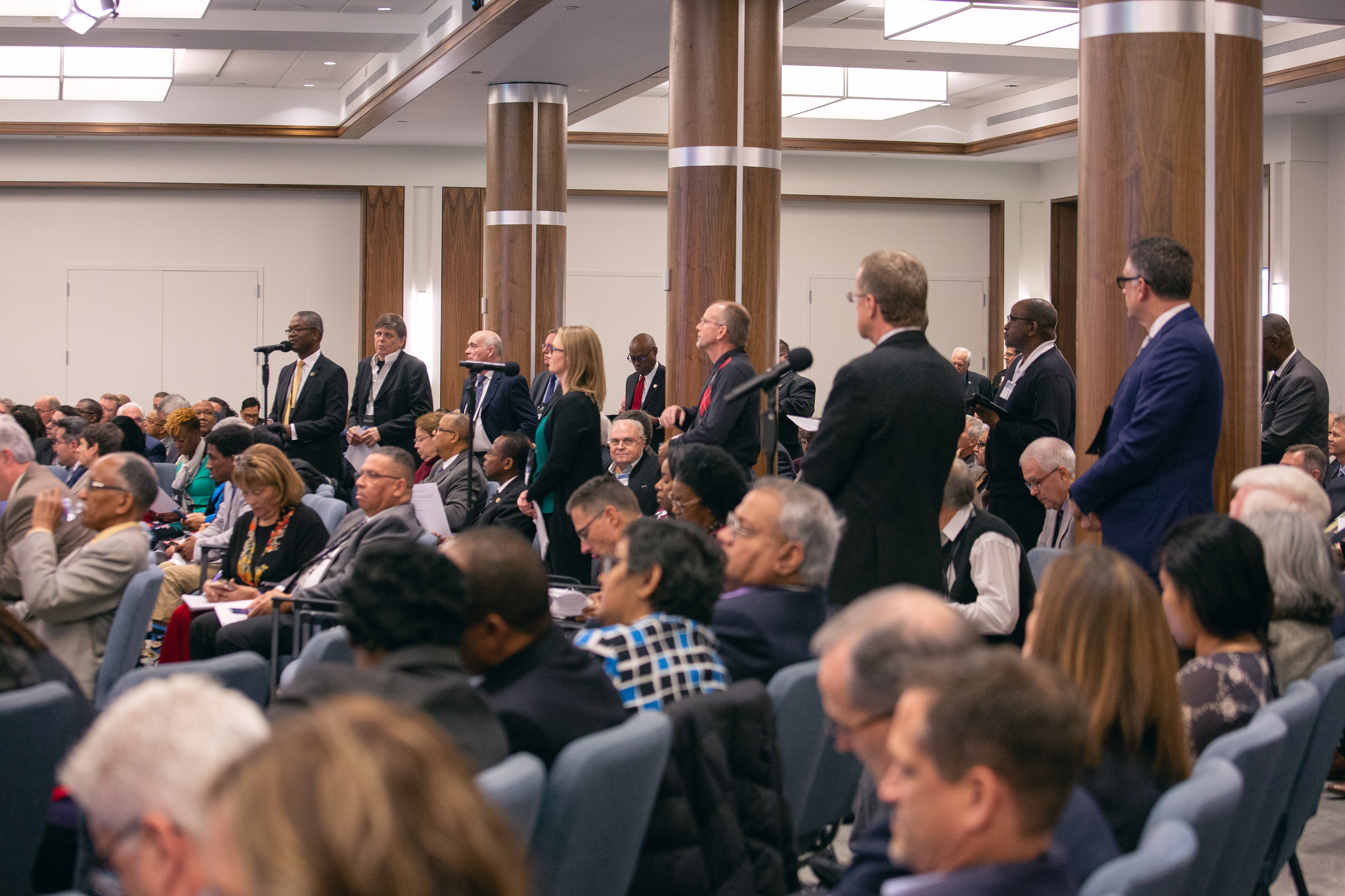
NAD executive committee members line up to speak during the morning discussion on the GC document voted at Annual Council that sets forth the creation of a new compliance process to assist with the need to implement church policies and voted actions. Photo by Pieter Damsteegt
Morning Discussion
The morning session was devoted to a discussion on the voted General Conference document titled “Regard for and Practice of General Conference Session and General Conference Executive Committee Actions,” which some are calling the “GC Compliance Document,” or “GC Unity Document.”*
Before the dialogue started, Daniel R. Jackson, president of the Seventh-day Adventist Church in North America (NAD), described what he hoped the tone of the discussion would be, saying, “We are not going to present you with documents so that you get on your knees and pray and agree with us. The Holy Spirit does not eliminate opinions.”
Jackson warned, however, that those participating in the conversation not “name names,” asking that those commenting “extend dignity to the other idea or other person who has spoken.”
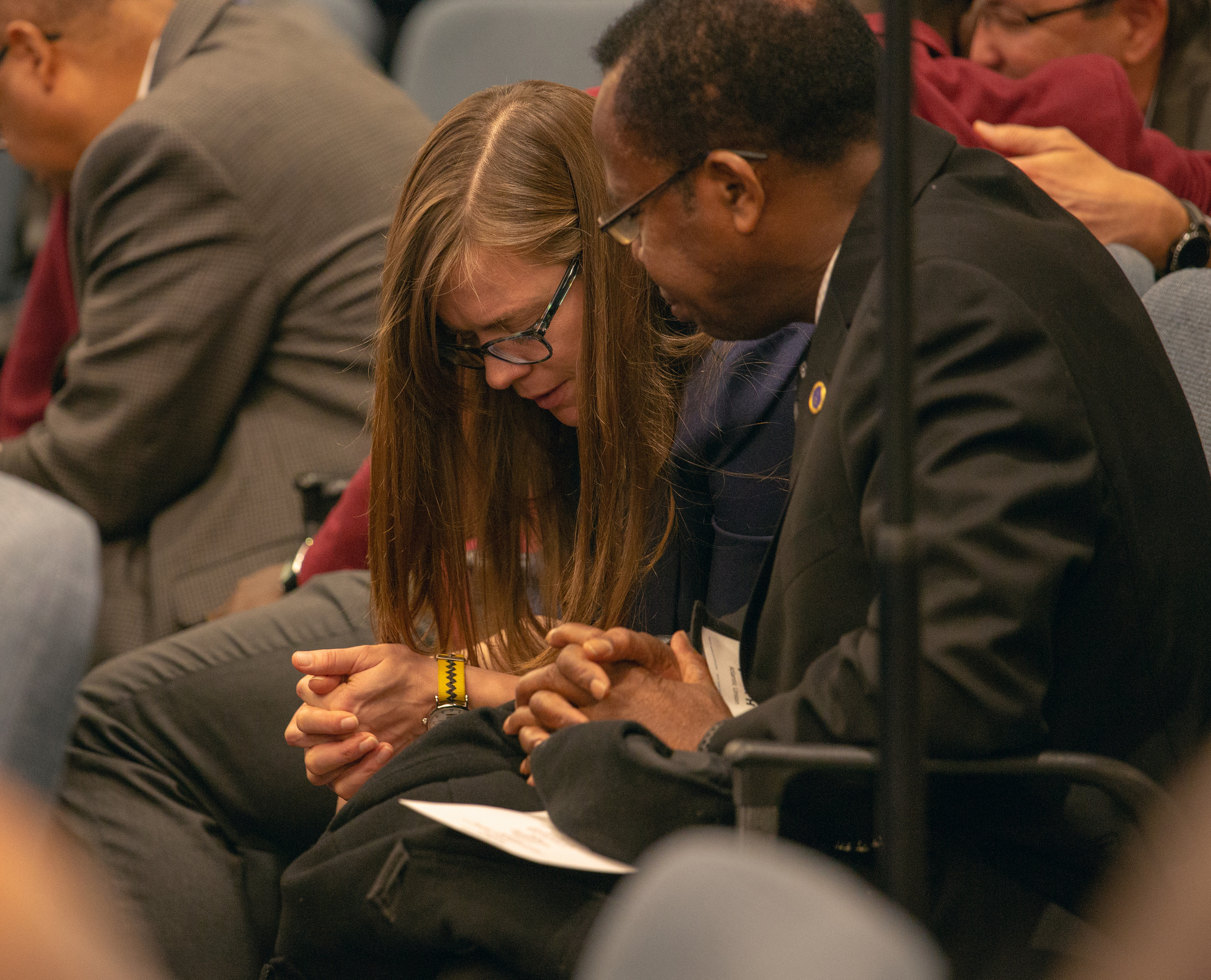
NAD Year-End meeting delegates pause for prayer during the morning discussion on Nov. 4, 2018. Photo by Pieter Damsteegt
He said, “We need to have this discussion done in prayer. We need to draw some conclusions. Talking is good, cathartic. At the end of the discussion we will attempt to draw some conclusions and make some decisions.” Jackson then outlined the morning schedule: more than three hours allotted for the discussion, including the opportunity at the end to give specific suggestions to a writing committee, voted right before the commencement of the discussion, to help with a written response from the NAD to the GC document.
Jackson concluded by saying, “This will be a family discussion. We plead with God today to lead us as we talk and shift gears [to a] mode of ‘how to we resolve this issue.’”
[A fuller report on the discussion and outcome will be published upon completion of item.]
Adventist Review Ministries
The afternoon was packed with the first series of reports from the division’s various entities, services, and ministries.
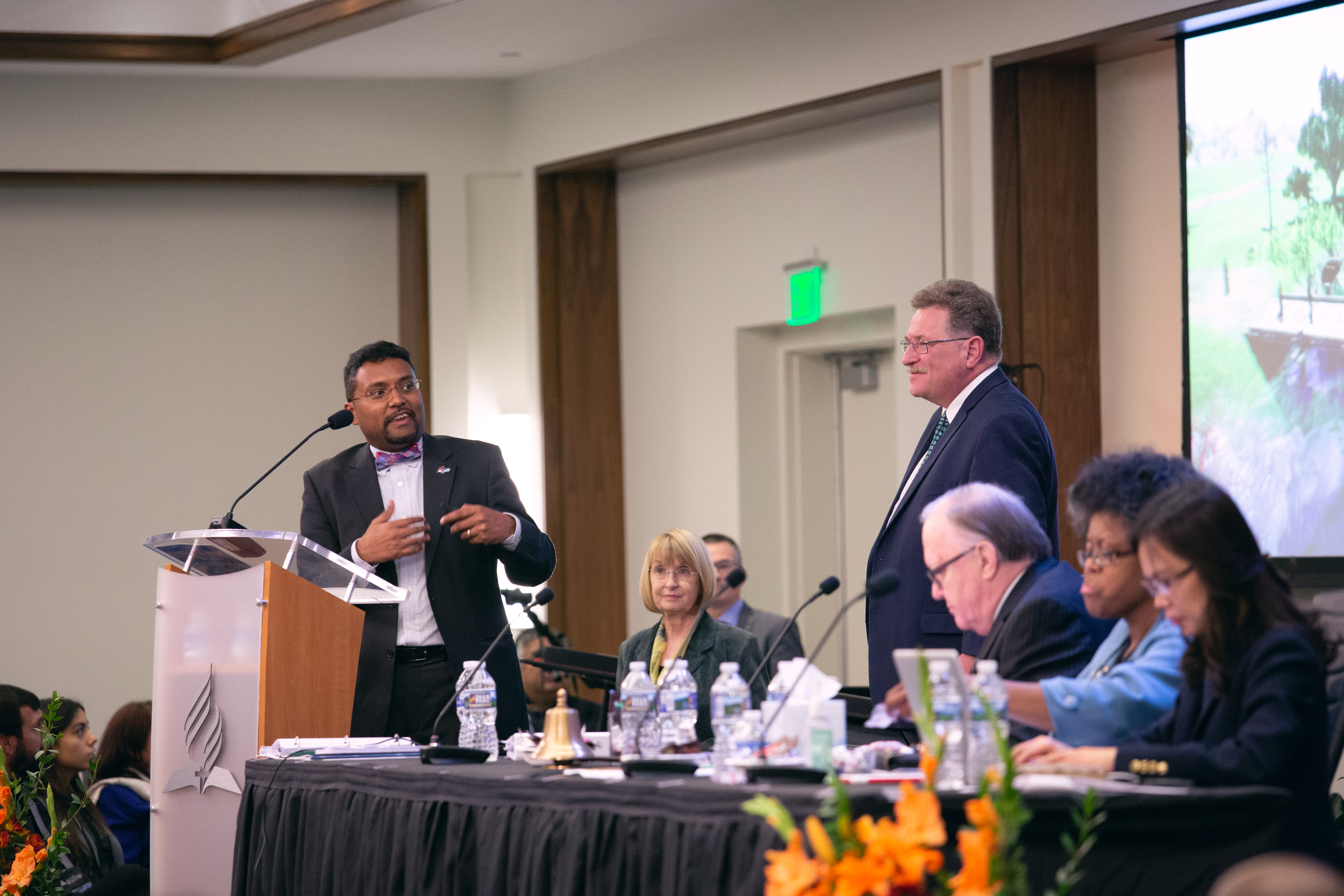
Daryl Gungadoo, from Adventist Review Ministries, shares part of the multi-media ministries report to the NAD Year-End Meeting on Nov. 4, 2018. Photo by Pieter Damsteegt
Adventist Review Ministries kicked off the YEM reports with a presentation of its new content and methods of distribution through ARtv, news and commentaries, the physical Adventist Review and Adventist World magazines, podcasts, books, and video and virtual reality services for Adventist projects worldwide. The ministry also briefly mentioned Adventist Journey, the magazine published in partnership with the NAD to share the stories of members in the division.
“We’re all about building bridges, not just to what was — the rich history of this people — we’re all about building bridges to the future that God intends for this people, a future of inclusiveness, equality, involvement, and mission, “said Bill Knott, executive editor/publisher of Adventist Review/Adventist World.
Literature Evangelism
The publishing report was introduced by Alvin Kibble, vice president for Big Data + Social Media, Public Affairs and Religious Liberty, Publishing Ministries, and Executive Coaching, Training and Development.
“Give literature a chance,” said Kibble, as he introduced the new director, Carl McRoy, who was elected on Nov. 2.
McRoy said, “Apples are mysterious ... and I [paraphrase] Robert H. Schuller: Anyone can count the seeds in an apple, only God can count the apples in a seed. … I’m just here to help spread some more gospel seeds.”
Testimonies from leaders of literature evangelism efforts throughout the division comprised the report, which included student colporteurs through Youth Rush, GLOW Tracks, Souls West; work through iShare, Adult Big Book ministry, Magabooks; and innovative methods to evangelize via literature through the iHeal – InHome Wellness Retreat in Toronto, Canada, and new app “Canvasser.”
“This church has the best news on the planet,” said William Smith, publishing director of the Southern Union Conference. “Literature distribution still gets church members and pastors fired up.”
Higher Education
Gordon Bietz, NAD associate director for Higher Education, delivered updates on Adventist colleges and universities. A large portion of the report focused on the Adventist Higher Education Summit that took place in this summer to develop a “strategic alliance,” outlined in “The Chicago Declaration,” to strengthen the overall educational system.
Over the years, NAD Education has received a decreasing amount of contacts from conferences for the purposes of recruiting students ages 10-15. Bietz presented a motion to ask conferences to allow the entity to access its e-database to gain a bigger pool of potential students to target. The motion passed, however, G. Alexander Bryant, NAD executive secretary, remarked that conference presidents have turned down this request in the past and instead recommended a conference-by-conference approach to accessing the information.
Philanthropic Services for Institutions
Lilya Wagner followed with a report from Philanthropic Services for Institutions (PSI). Wagner, director of PSI, challenged attendees to consider the scope of their knowledge when it comes to fundraising, and to explore the resources that the service has readily available.
“Fundraising is global, a process, a team effort, requires investment, requires accountability, and takes time,” said Wagner.
At PSI, we “help constituents, support boards, understand the time and money involved, adapt solid and tested principles, provide accountability, present promise of outcomes to donors, respecting donors, and practice good stewardship,” continued Wagner.
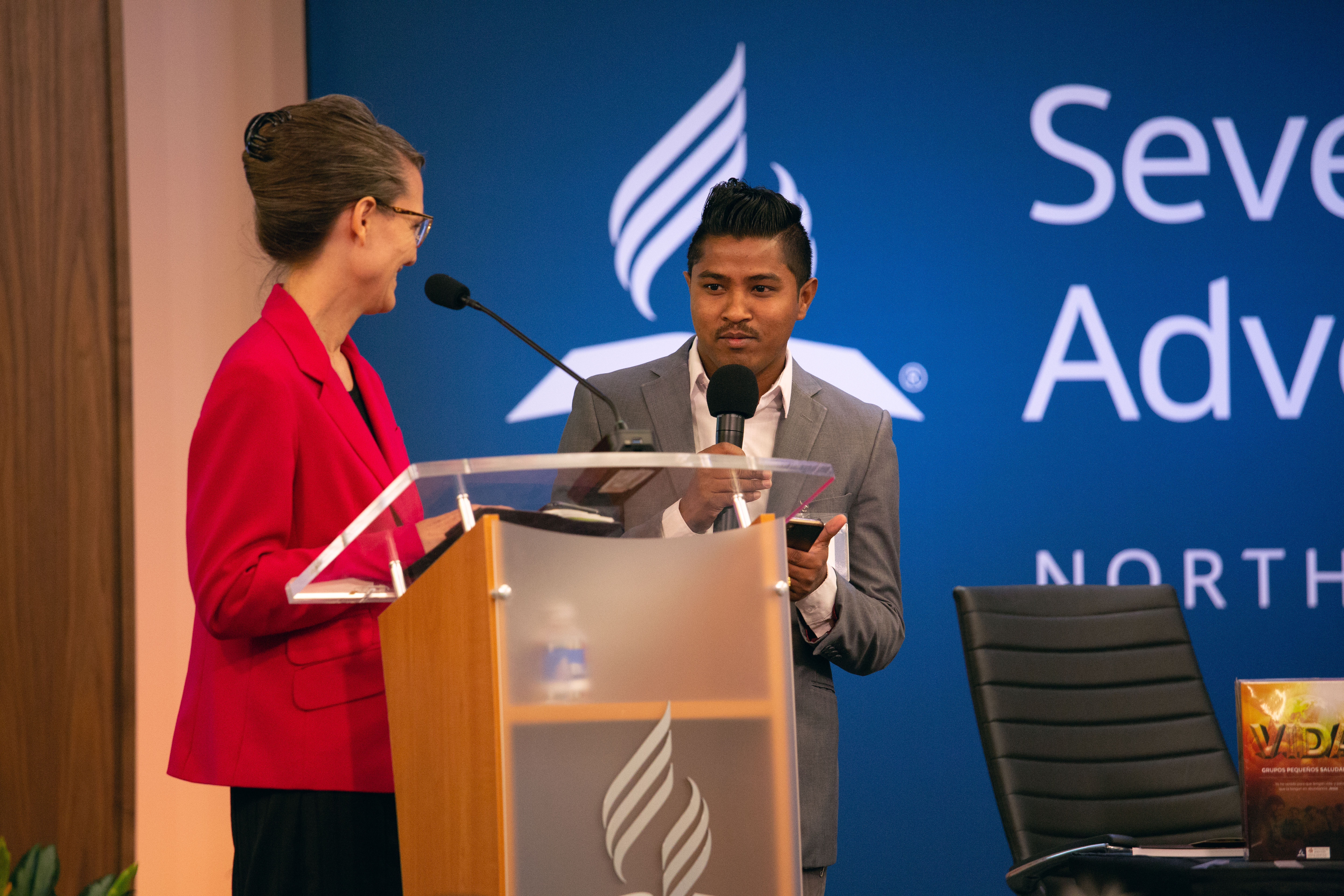
Terri Saelee, NAD coordinator for Refugee and Immigrant Ministries, gives her YEM report with a ministry colleague. Photo by Pieter Damsteegt
Multi-Lingual Ministries
The final report of the afternoon was given by Multi-Lingual Ministries. Tony Anobile, NAD vice president for the ministry, which oversees the efforts of 15 languages and the people-groups related to those languages. Committee members heard from three of the 13 directors within the ministry, Terri Saelee, NAD coordinator for Refugees and Immigrant Ministries; Gabriela Phillips, NAD coordinator for Adventist-Muslim Relations; and Ralph Ringer, NAD coordinator Jewish Ministries.
The report concluded with updates on the division’s Hispanic ministries and the special evangelism caravan that has traveled throughout the United States. The Caravan of Hope’s final stop was the North Pacific Union, where César De León is the union’s ministerial and Hispanic ministries director. De León said churches need to be more externally focused if it wants to stay on track to create 15,000 small groups within Hispanic communities.
“Community is to church what water is to a fish,” he said. “Some of our churches are dying because they want to ‘do church,’ but they aren’t willing to ‘do community.’”
* The General Conference Executive Committee, at its Annual Council meeting, approved a recommendation from the church’s Unity Oversight Committee: the creation of a new compliance process to assist with the need to implement church policies and voted actions.
